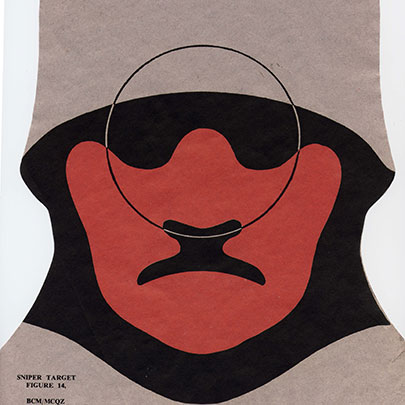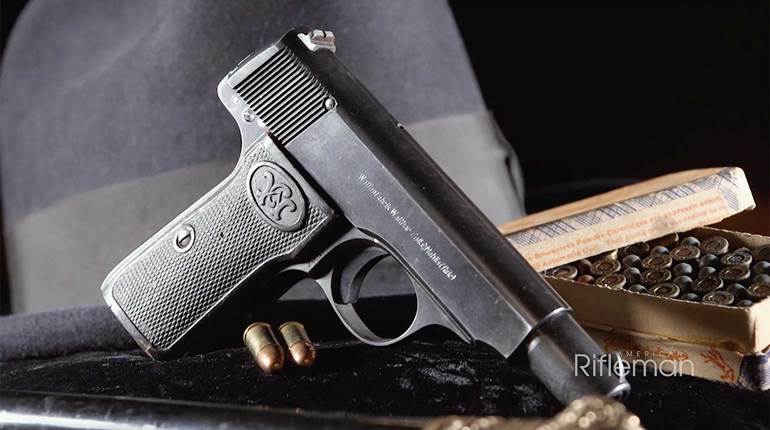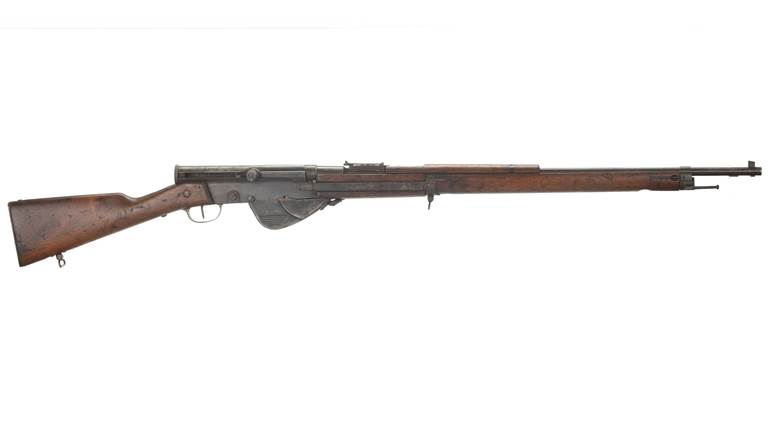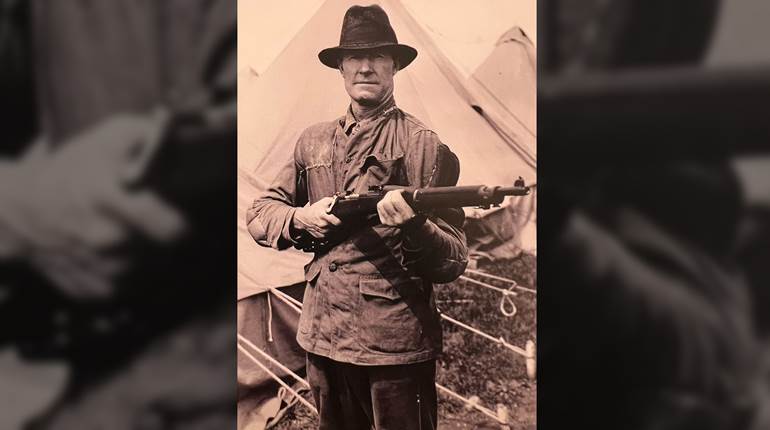British Galilean “optical” sights have always been somewhat of an elusive and mysterious commodity for collectors and students of sniping. They are desirable, typically rare and controversial as to what extent they may have served on the front lines during World War I. In reference books, observations of museum specimens and speculation as to their use are all that so far have been documented. In my view, to understand history the context of an earlier time should be applied at the present, so these optical sights needed to be evaluated empirically in order to understand what their capabilities were in World War I.
For the benefit of the above sniping enthusiasts, many questions needed to be answered about these sights. As countermeasures against the German sniping threat in 1915, were the various optical sights at all advantageous over iron sights? If so, which types gave the best accuracy, and to what distance? Eventually, when better conventional telescopic sights became plentiful, were the optical sights quickly discarded, or were they retained? What evidence is there of their tactical usage?

Today, only some of these questions can be addressed, while others have to be left unanswered due to lack of World War I period documentation. What we attempted in 2011 and in 2015 was to examine, to the best of our ability, how six optical sight types compared with iron sights (leaf and aperture) when shooting over ranges of 100 and 200 yds. at simulated World War I “targets of opportunity." This included a Hun’s head, popping up over the parapet, and a loophole slit for an enemy sniper’s hide, incautiously opened, allowing it to be backlit.
Of the above questions, we could address within our tactical scenario the following. Whether the Galilean sights were at all advantageous over “iron” sights. Which type of sight gave the best accuracy, within the parameters of our trial. What were the shooters’ favorites, in terms of ease of use, confidence and ability, and out to what range.

To try to demonstrate, as realistically as possible, the actual potential of each sight in terms of trench warfare, the “experiment” was structured as such; using ex-special forces snipers with one spotter and one shooter per trial. Only Short, Magazine Lee-Enfield Mk. III/III*(SMLE), Charger-Loading Lee-Enfield (CLLE) and Pattern 1914 rifles that shot less than one m.o.a. were used, and the open vs. Galilean sights were evaluated at both 100 and 200 yds. The Galilean sights used were the Neill / Barnett / Ulster, BSA, Gibbs, Lattey and Martin (for both CLLE and SMLE). Open “iron” sights used were leaf (SMLE Mk. III*) and aperture (Pattern 1914 Winchester) with a fine adjustable rear sight
To replicate targets commonly encountered over the vast despair of No Man’s Land we utilized the British Army’s Figure 14 “Huns Head” sniper training target and a simulated “paper” loophole plate, having a central white oval with the exact specifications of a German World War I aperture, on a camouflaged background. These targets were displayed from behind sandbags by a remotely operated trap at random intervals, and engaged by our shooters with a single shot per three-second exposure.

This combination of timed exposure and shot is not altogether dissimilar from the “Double-Snaps” competition found during the historical matches at Bisley Camp in the United Kingdom. For “Double-Snaps,” a shooter must fire two aimed shots per five second appearance of a “Hun’s Head” over the berm in front of the target butt at 200 yds., without the aid of optics; this too harkens back to the era of trench warfare.
For the sake of efficiency, each “sniper” was given the use of three Galilean-equipped rifles and one iron sighted rifle during the trial. Sniper One used BSA, Neill and Gibbs optical sights and a Pattern 1914 aperture (iron) sight. Sniper Two fired Martin (SMLE), Martin (CLLE) and Lattey optical sights and a SMLE Mk. III* leaf (iron) sight.

Following the shoot, questionnaires were handed out to our snipers in an attempt to tap into their practical knowledge for a better assessment of the usefulness of the sights and the rifles employed in the trial.
Unequivocally, the magnification helped accurate shooting at both distances under all conditions (e.g. bright sun, fog, and overcast - we had all three). Magnification helped define the target, its edges and any movement. With open sights the shooter would need to look over them to identify the target with the naked eye, then re-acquire both sight picture and cheek-weld before firing; all of these actions are time-consuming.

The confidence each shooter displayed in a specific sight for a first shot hit prioritized from most to least were: Sniper One, Gibbs, Neill, BSA, Pattern 1914 (aperture sight); Sniper Two, Martin (both types), Lattey, SMLE (leaf sight). Sniper One’s favorite was, understandably, the Gibbs with its familiar post and crosswire “reticle” (graticule). He was satisfied that hits could be made with the Gibbs out to 300 yds. He also put some confidence in the Neill and BSA sights to distances exceeding 200 yds., using an appropriate hold on the 4 m.o.a. dot, allowing the target to be seen. Sniper Two’s favorite sight, of those he used, was the Martin, feeling that the “dot” was better than the Lattey’s blade for rapid target acquisition out to 150 yds.
As was the case a century ago, the 4 m.o.a. aiming dots of the Neill, BSA, and Martin sights were less than perfect for sniping purposes. While somewhat useful at 100 yds. shooting at “center of mass,” the dot still covered most of the Hun’s head and the loophole. To be able to visualize and identify the target at 200 yds., rifles needed to be zeroed using a six o’clock hold by placing the 12 o’clock position of the dot beneath the target. Though this hold eliminated a fine aiming point, both shooters felt confident about making accurate hits by using this technique.

When recovering from recoil, the vertical array of three dots on the BSA’s objective lens made it difficult to quickly reacquire the correct dot for aiming.
The Lattey sight reduced the definition of the fore-sight, and any light reflection off the blade diminished it even further. These factors made it hard to rapidly acquire it for aiming. However, this would not be as critical if the sniper was in a hide, or if the fore-sight blade was more effectively blackened. Army veterans interviewed have mentioned using candle smoke to blacken their rifle’s foresights.
For the SMLE and the Pattern 1914, their battle sight front blades were problematic in sunlight, unless well blackened. Again, this would not be a problem in the shaded environment of a hide.

Manipulation of the bolt between shots was time consuming, and the shooter had to re-acquire the cheek-weld anew for each shot. However, that’s the nature of the bolt-action beast.
Sniper One preferred the left-offset Neill sight if a quick second shot was needed. He found working the rifle’s bolt didn’t interfere as much in follow-up shots, since he was able to better maintain his cheek-weld (although an improvised cheek rest was necessary to increase the height of the butt).

A nearby spotter is absolutely necessary to assist the sniper in finding targets for rapid engagement, primarily due to his greater field of view. Also, a spotter is in the best position to tell if the shot was effective. The shooter would be busy at the moment of impact recovering from the rifle’s recoil.
Following the trial, targets were evaluated, groups were measured, and a scoring system was employed to rank the relative performance of each Galilean sight. The scores for each sight were established by the following, rudimentary, criteria:
Hun’s Head (Figure 14):
Head (anywhere, neck incl.) – 5
Helmet (head, peripheral) – 4
Body (e.g. shoulder) – 3
Paper – 2
Loophole:
Slit – 5
“Magpie” (slit margin) – 4
“Plate” – 3
Paper – 2
This scoring system appears to have worked within the parameters for our trial and generally reflects our shooters’ questionnaire responses. A perfect score is 25 as an average between the 100- and 200-yd. engagements. Below are our rankings:
Gibbs – 25
Martin (CLLE) – 25
Neill – 24
BSA – 24
P’14 (iron) – 24
Martin (SMLE) – 23
Lattey – 20
SMLE (iron) – 20
The physical attributes of the resolving power of the Galilean telescope may have had a lot to do with the above scores. Simply, the longer the sight radius, the better the definition (i.e. resolving power). Maybe this is why the Lattey and SMLE came in last.
From the TEXT BOOK OF SMALL ARMS – 1929; Pgs. 60-61: “The length of sight radius is important with this [Galilean] sight, because, for any given magnification, the lack of definition is inversely proportional to the sight radius. Thus much more blurring occurs with this sight when used on the SMLE which provides a 30 inch sight radius, than is the case with the match rifle fired from the back position, when the sight radius is about 45 inches.”

The longer sight radii of SMLEs mounting the Martin, Gibbs, or Neill sights and CLLEs fitted with No. 9s on their receivers, all would give better definition than the Lattey, with its concave ocular lens fitted to the rifle’s standing leaf midway up the barrel. Thus, theoretically, the longer CLLEs fitted with the No. 9 rear and their convex front lenses at their muzzles would offer the best definition. But this is splitting hairs, as there was only an inch or two + difference between the sight radii of the Neill and No. 9 aperture-sighted SMLEs and CLLEs. However, the Lattey sight had roughly one-third less sight radius than the other rifles used in this trial (see below).
Radii of Galilean Sights Used in our Trial:
- Lattey: 20 1/8” (the same as the SMLE iron sights)
- Neill: 31”
- Gibbs: 30”
- BSA: 31 ½”
- Martin (CLLE): 33”
- Martin (SMLE): 29 3/8”
- Pattern 1914: 31 3/4”
So what has this trial shown us on the efficacy of the Galilean sight, in terms of the past, viewed from a present day perspective? Ultimately, the Galilean sights were definitely an asset for the British army coming to grips with the intense early German sniping threat. The static, close aligned trenches of the Western Front and Gallipoli, some no more than 50 yds. apart in 1915, must have allowed even low-powered optical sights a distinct advantage for a Tommy in a hide over the battle sights of the service rifles for identifying and engaging targets of opportunity with some accuracy.

Still unknown are their eventual status in the subsequent years of World War I. An artifact Lattey sight, recently excavated at Arras, France, may give some final clue to the extent of their employment. The battle at Arras was in April to May, 1917, long after SMLEs mounted with conventional telescopic sights had become commonplace on the battlefield. So, much is still a mystery and so much more is yet to be discovered by the inquisitive.
























